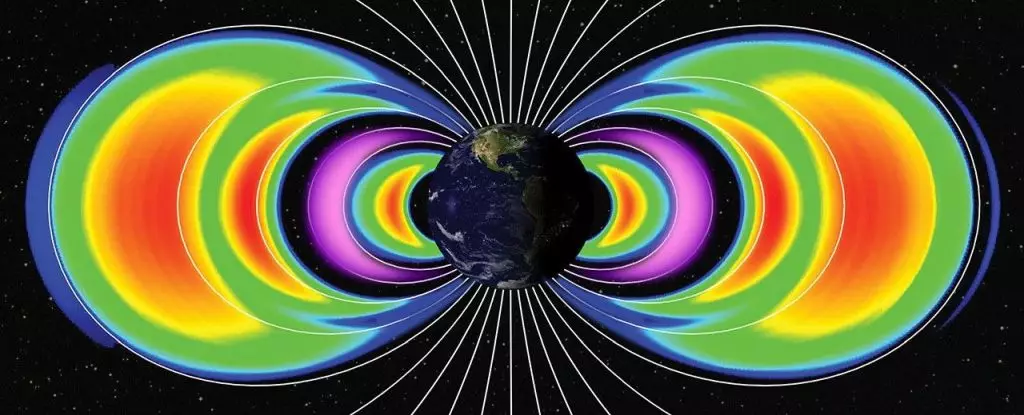The solar storm that erupted in May 2024 sent shockwaves through the scientific community, not only due to its spectacular auroras but also because of the unprecedented effects it had on Earth’s magnetic environment. The storm, fueled by intense solar flare activity, dramatically altered our planet’s radiation belts, eliciting a mixture of awe and concern among researchers.
Historically, Earth’s radiation belts, primarily the Van Allen belts, have served as protective shields by trapping harmful high-energy solar particles. This natural mechanism is crucial because it mitigates the potential damage solar winds might inflict upon the planet. The May 2024 solar storm added a new layer of complexity to our understanding of these shielding effects, revealing the presence of two temporary radiation belts that were markedly different from anything previously observed. Scientists were particularly intrigued by the discovery of a proton-rich belt, mirroring the way a new chapter is added to a long-established book.
This phenomenon challenges existing models that relied on previous solar storms’ data. The detection of energetic protons encasing new belts of radiation indicates that our research paradigms must evolve. Unlike earlier incidents that only yielded electron-rich belts, the presence of protons suggests a shift in our understanding of what solar activity can contribute to our immediate space environment. The analytical ruminations of Dr. Xinlin Li from the University of Colorado Boulder epitomize this sentiment. When confronted with the newfound data, she reflected on the shock of seeing “something really new,” which hints at the potential for groundbreaking discoveries triggered by solar phenomena.
One key takeaway from the May 2024 storm is the remarkable longevity of the new radiation belts. While temporary belts usually dissipate within weeks, this event left behind belts that persisted for up to three months, a duration far beyond the previously held norm. This extended lifespan invites questions about the mechanisms fostering such stability.
Could they exert a more permanent influence on future particle dynamics within Earth’s inner magnetosphere? Researchers are investigating this possibility. The observed stability of these belts also raises concerns about the risks they pose to satellites and other technologies operating within or approaching those layers of charged particles. As noted by David Sibeck, a NASA astronomer, the idea that some high-energy particles may linger for an extended period presents a potential hazard, delineating new territories in the intersection of solar activity and human technological reliance.
Given the growing concern about the interactions between solar storms and Earth’s magnetic field, future studies will be paramount in ensuring that appropriate measures are taken to safeguard our technological infrastructure. The presence of these newly identified radiation belts calls for an immediate reassessment of existing satellite designs, which must adapt to the potential for prolonged exposure to high-energy particles. Engineers will need to devise strategies not merely to withstand these phenomena but to predict their occurrence and mitigate associated risks.
Furthermore, as scientists continue to track the longevity and decay rates of these radiation belts, we may uncover critical data that unlocks additional insights into Earth’s own protective mechanisms—the kind of knowledge that can foreseeably be utilized to reinforce our technological resilience against solar threats.
A New Era of Solar Research
The May 2024 solar storm signifies not just a moment of celestial wonder but also a pivotal moment in solar research. As we venture further into the complexities of space-weather interactions, the scientific community is urged to reevaluate foundational concepts regarding radiation belts. The traditional understanding of how and why these belts function as they do has been upended, showcasing the need for adaptive, forward-thinking research methodologies.
Overall, as we reflect on the events of May 2024, it becomes evident that the cosmos holds mysteries that continuously challenge and inspire humanity. The conflicts between the known and the yet-to-be-explored mirror our ambitions, reminding us that each discovery is but a precursor to the next adventure into the great unknown.


Leave a Reply